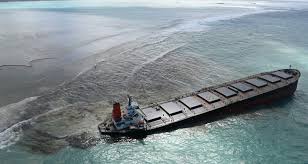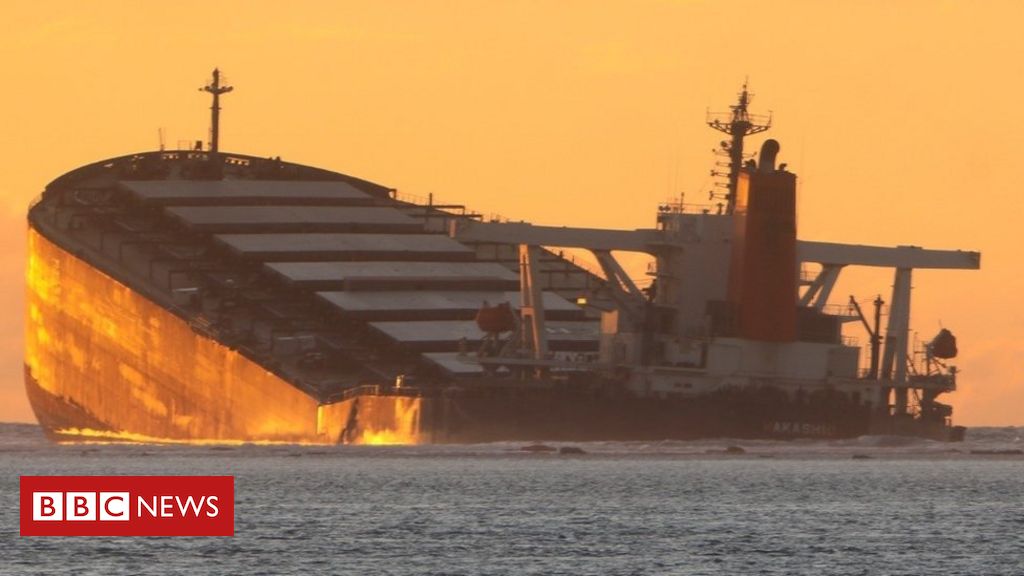A Japanese ship crashed on coral reefs in the tropical island of Mauritius on the 25th of July. There wasn’t a way to take the ship out of the waters. After sitting for a week, the Panama registered ship started to crack, resulting in yet another significant environmental disaster. An estimated 200 tons of diesel and 2,800 tons of heavy fuel oil on board began to spill.
Mesmerizing turquoise blue lagoon outside the coastal village of Mahébourg started to turn black with terrifying satellite images showing the impact of the spill. On August 7, the government declared the incident as a national emergency after at least 1,000 tons of fuel oil estimated to have already emptied into the lagoon.
The oil from the cracked portions of the ship has emptied, and the flow of oil has now stopped. However, the authorities are running against time to drain an estimated 2,500 tons of additional oil from the bulk carrier before it breaks to worsen the already out of control situation. However, Mauritians think the authorities have been too slow to respond, and hence have taken the matter onto themselves.
The locals of the area, whose income depends on the island’s tourism and fishing, are going all out to contain the drastic situation. They are making booms from sugar cane leaves, plastic bottles, and old stockings, but in the most desperate efforts are cutting off their hair to preserve the previously crystal clear lagoon.
The logic behind the unified drive is simple: human hair is lipophilic, which means it repels water but attaches to oil, acting as a very efficient separator since one kilogram of hair can absorb 8 liters of oil.
The volunteers are cutting their ends to collect massive quantities of human hair to help soak the oil spill. Some hairdressers are even offering free haircuts to those who are willing to donate. Sadly, to bringing this drive into positive outcomes, Mauritius should run a global hair drive. Hairdressers could sweep up cut hair, put it in a box, and ship it to help the cleanup.




